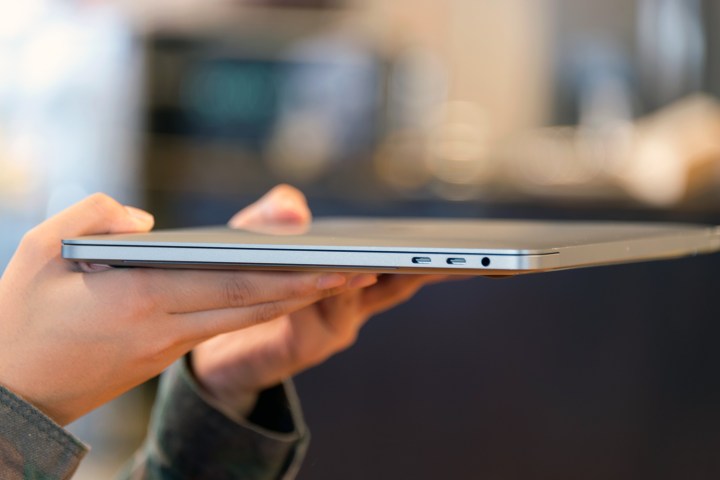
Although there are certainly some problems with trying to create a new standard technology, Intel does have a reasonably solid history of achieving it. It helped develop the original USB standard back in the ’90s, which revolutionized the connection of various peripheral devices to PCs. Thunderbolt 3 is its next attempt to do so, with a reversible, high-power, wide-bandwidth input and output standard.
The future Intel hopes to reach one day is one where everything is run through a singular port type. With that support built into the Intel CPU at the core of a laptop or desktop, the systems can be built leaner, thinner, and lighter. Any of the Thunderbolt ports could power the system, or deliver data to and from it.
While that by itself should aid adoption by third-party manufacturers, in 2018 Intel will open up the protocol specification to a much wider audience, by releasing it with a non-exclusive, royalty-free license. This will allow other chip manufacturers like Qualcomm or AMD to build Thunderbolt functionality into their processors too, further enhancing the uptake of the Type-C standard.
Over the past few years, Intel has worked closely with other companies to enhance Thunderbolt 3 as the worthy successor to traditional USB ports. It teamed up with Apple to co-develop the standard and recently enhanced its device plug-and-play support with Microsoft’s Creators Update for Windows 10.
Moving forward, Intel hopes to see as many as 150 different PC designs supporting Thunderbolt by the end of the year. In the years to come, however, it expects to see more single-cable docking systems for laptops and tablets, as well as faster external storage options, better support for external gaming graphics cards, and higher throughput for virtual reality headsets.
That is, if they don’t go wireless for the next generation.
Editors' Recommendations
- USB-C charging laptops: Here’s what you need to know
- Thunderbolt 4: everything you need to know
- This 240W USB-C cable opens up new charging possibilities
- The EU wants Apple to ditch the Lightning port for USB-C by 2024
- Intel’s upcoming Thunderbolt 5 could make future USB-C ports twice as powerful




